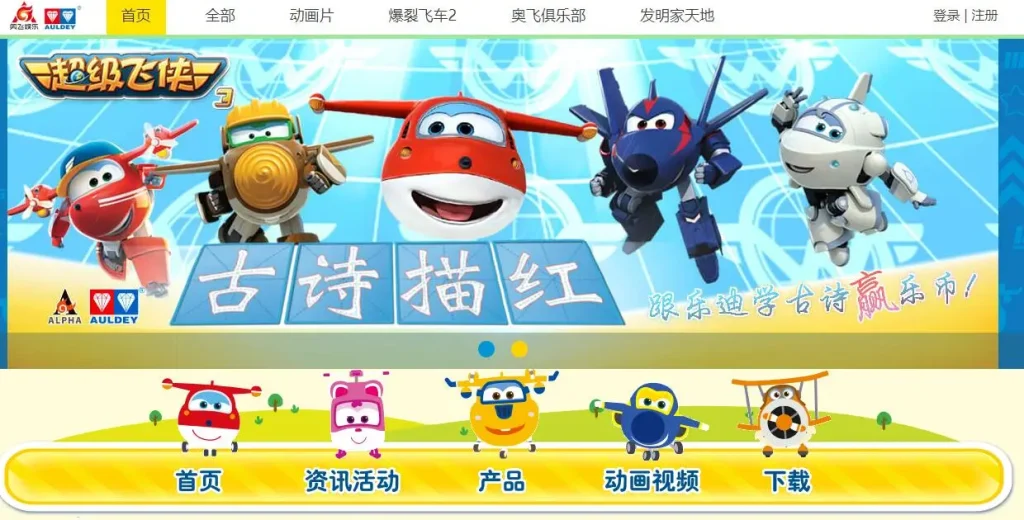I. Introduction
The landscape of the chinese toy industry is undergoing a transformative shift, marked by a pronounced inclination towards the amalgamation of “Toys + IP” (Intellectual Property). In recent years, market dynamics have witnessed a significant surge in the collaboration between toys and iconic intellectual properties, reshaping the way companies approach brand development and market strategies. This paradigm shift is underscored by a growing recognition of the pivotal role Intellectual Property plays in shaping the success trajectory of toy businesses. As we delve into the evolving narrative of the industry, it becomes evident that the conventional approaches to brand establishment are being redefined, giving rise to a new era where the strategic integration of Intellectual Property becomes a cornerstone for sustained growth and market relevance. This introduction sets the stage for a comprehensive exploration of the multifaceted relationship between toys and intellectual property, examining the market observations that underscore this trend.
II. Challenges in Establishing Toy Brands in China
The Chinese toy industry, despite its multitude of enterprises, grapples with formidable challenges in establishing robust and recognizable brands. A critical analysis reveals several hurdles that impede the flourishing of domestic toy brands in this highly competitive market. One primary factor contributing to the limited success is the persistent issue of product imitation, resulting in a market saturated with homogeneous offerings. Additionally, the prevalence of price wars exacerbates the challenges, as brands struggle to differentiate themselves based on quality and innovation.
The dominance of foreign toy brands in the high-end market further diminishes the visibility and influence of homegrown enterprises. Chinese toy companies often find themselves confined to a role of manufacturing for international brands, primarily earning revenue through processing fees. However, the shifting landscape, marked by increased material, logistics, and labor costs, poses a threat to the profitability of this traditional model. These challenges highlight the imperative for Chinese toy businesses to explore alternative strategies for growth, with a particular emphasis on leveraging Intellectual Property.
III. Embracing IP for Future Growth
The imperative of integrating Intellectual Property (IP) into the core strategies of toy industry players is underscored by compelling data from the “The Top Global Licensors Report 2023,” a publication by “LICENSE GLOBAL,” a prominent licensing industry magazine. Disney, a frontrunner in this paradigm shift, has not only secured the top position with an impressive $617 billion in licensed retail sales but has strategically leveraged acquisitions like Pixar, Marvel, and Lucasfilm to amass a diversified IP portfolio. This portfolio includes iconic franchises such as Toy Story, Iron Man, The Avengers, and Star Wars, demonstrating the pivotal role of inorganic growth in fortifying a robust IP foundation.

Image source: Disney
Intriguingly, Disney’s success extends beyond acquired IPs to its in-house creations, featuring beloved characters like Winnie the Pooh, Mickey Mouse, and Disney Princesses. The resounding success of the Frozen franchise, with over 800 million licensed product units sold in China, highlights the commercial prowess of cultivating original IPs. Equally noteworthy is the market shift towards adult consumers, evidenced by Disney China’s licensed plush toys maintaining an impressive annual growth rate of 50% over the past three years.

Image source: Disney
Contrastingly, Mattel, while facing challenges, strategically maneuvered by regaining control of the Disney Princess series and intensifying its IP focus. Collaborating with Warner Bros. for the live-action Barbie movie, Mattel showcased its commitment to revitalizing existing IPs. The film’s remarkable $70.5 million North American debut reflects the tangible financial rewards of reinvigorating well-established IPs.
These data-driven insights underscore the industry’s recognition of IP as a linchpin for future growth. The success stories of Disney and Mattel not only highlight the profitability of acquiring and nurturing IPs but also emphasize the need for strategic recalibration in response to market dynamics. As toy companies navigate this transformative landscape, data-backed decisions become pivotal, shaping a trajectory that aligns with evolving consumer preferences and secures long-term market relevance.
IV. Diverse Approaches to IP Integration
Companies within the toy industry exhibit diverse approaches when it comes to integrating Intellectual Property (IP) into their business strategies. These approaches range from cultivating original IPs to acquiring established ones, each with its unique set of challenges and opportunities.
One exemplar in this landscape is Hasbro, which successfully transformed its struggling toy-robot line, Transformers, into a multibillion-dollar movie franchise. By capitalizing on the nostalgic value and fan base of the Transformers brand, Hasbro not only revitalized the toy line but also expanded its reach into movies and beyond. However, as evidenced by the failed attempts with board game-based movies, such as Monopoly and Battleship, IP-based filmmaking can be a double-edged sword. Negative receptions can potentially harm the brand and result in declining sales.
On the other hand, Mattel’s recent foray into IP-driven filmmaking, particularly with the Barbie movie, exemplifies the company’s commitment to creating new IPs based on existing ones. With numerous films in development, Mattel is leveraging its brand power to not only strengthen existing IPs but also to venture into new territories, like a Magic 8 Ball horror film and a Hot Wheels franchise.
These diverse strategies showcase the industry’s acknowledgment that IP plays a pivotal role not just in protecting brands but also in propelling them into new dimensions, from movies to merchandise, creating a synergy that enhances the overall brand value.
V. Challenges and Opportunities for Small and Medium Toy Enterprises
While industry giants like Disney, Mattel, and Hasbro have successfully navigated the landscape of “Toys + IP,” smaller toy enterprises face both challenges and opportunities in this dynamic market.
Challenges:
- Limited Resources: Small and medium-sized toy companies often lack the financial resources required to invest in original IP creation or to acquire established ones.
- Competition for Established IPs: Collaborating with well-known IPs, such as those from Disney or Marvel, can be challenging due to the high demand, leaving smaller players with fewer options.
- Risk of Negative Impact: Developing products based on existing IPs carries the risk of negative reception, which could harm the reputation of smaller enterprises.
Opportunities:
- Strategic Collaborations: Partnering with larger companies or other smaller players can offer a strategic entry point into the world of IPs, allowing for shared resources and expertise.
- Niche and Original IPs: Focusing on niche markets or creating original IPs that resonate with specific audiences can provide a competitive edge.
- Flexibility and Innovation: Smaller enterprises can capitalize on their agility to experiment with innovative approaches, be it in product design, marketing, or collaborations.
By understanding these challenges and opportunities, small and medium toy enterprises can better position themselves to harness the power of IP for growth, albeit through different avenues than their larger counterparts. The industry’s future success may well hinge on the ability of diverse players to navigate these challenges and capitalize on emerging opportunities.
VI. Case Studies: Chinese Toy Companies Embracing “Toys + IP”
As the global trend of “Toys + IP” continues to gain momentum, Chinese toy companies are strategically adapting to this shift, exemplified by the notable endeavors of AoFei Entertainment and Senbao.
AoFei Entertainment: In the early stages of its journey, AoFei Entertainment astutely recognized the symbiotic relationship between toys and intellectual property. By seamlessly integrating the creation of original animated content with corresponding toy lines, AoFei successfully established a robust connection between its IPs and physical products. Notably, data from 2022 reveals that IP toy sales accounted for approximately 37% of the company’s total revenue. The “Super Flyers” and “Magical Guardians” toy lines, accompanied by engaging animated series, not only penetrated the lucrative toy market but also cultivated a dedicated fan base for its original IPs.

Image source: AoFei
Senbao: In a transformative phase, Senbao, renowned for its expertise in plastic toys, embraced the “Toys + IP” concept with remarkable success. Recognizing the growing importance of cultural relevance, Senbao secured IP licensing partnerships with iconic Chinese cultural symbols, resulting in the creation of toy lines such as “Floral Charm Teatime,” “Steel Mech Warriors,” and “Dragon Youth.” Notably, the “花颜茶语” (Floral Charm Teatime) series garnered significant attention, with the first unboxing video reaching a million views on the launch day and achieving an astounding single-day sales revenue of 20 million RMB.

These case studies not only illuminate the innovative strategies adopted by Chinese toy enterprises but also showcase the tangible impact of IP integration on business performance. The data-driven success of AoFei Entertainment and Senbao reinforces the narrative that aligning toys with compelling intellectual properties not only captures market share but also becomes a driving force behind sustained revenue growth. As Chinese companies continue to navigate the dynamic landscape of “Toys + IP,” these case studies provide valuable insights into the diverse approaches shaping the future of the industry.
Beyond the products mentioned above, there are also many excellent IP toys locally in Chenghai, featuring diverse styles. If you’re interested, you can contact NexaToys, your premier toy supplier in China. NexaToys can assist you in wholesale toy procurement directly from manufacturers and toy factories.
VII. Evaluating the Long-Term Impact: Brand vs. IP
As the “Toys + IP” trend continues to reshape the toy industry, it becomes imperative to assess its long-term implications, particularly in the context of brand development and intellectual property integration.
Balancing Established IPs with Originality:
The success stories of global giants like Disney, Mattel, and Hasbro underscore the significance of leveraging established IPs. However, the sustainability of this trend hinges on achieving a delicate balance between relying on proven IPs and fostering originality. While established IPs offer immediate market recognition and a built-in fan base, the risk of oversaturation and dependence on external properties poses challenges for sustained innovation.
Navigating the Evolving Dynamics:
For toy companies, navigating the evolving dynamics involves a strategic interplay between building strong brands and integrating compelling IPs. The traditional model of relying solely on brand-building strategies or IP collaborations is evolving into a more nuanced approach. Successful companies are those that adeptly combine the two, creating a dynamic ecosystem where the brand serves as a foundation, and intellectual properties contribute to diversified product lines and storytelling.
Consumer Sentiments and Trends:
Understanding consumer sentiments and emerging trends is integral to evaluating the long-term impact. The modern consumer is not only drawn to familiar IPs but also values authenticity, innovation, and a narrative that resonates with their values. Toy companies need to remain agile in responding to shifting consumer preferences, ensuring that their brand and IP strategies align with the ever-changing landscape of entertainment, culture, and play.
VIII. Conclusion
In conclusion, the fusion of “Toys + IP” is not merely a trend but a transformative force in the toy industry. The case studies of Chinese companies like AoFei Entertainment and Senbao showcase the adaptability of businesses in aligning with this trend, illustrating both the opportunities and challenges faced.
As the industry continues to evolve, the coexistence of brand building, IP integration, and originality emerges as a crucial formula for a thriving toy business. Companies that can strike the right balance, leveraging the power of established IPs while fostering creativity and innovation in their product development, are likely to define the future landscape of the toy industry.
In this dynamic and competitive environment, the journey towards sustained success involves not only understanding the market trends but also actively shaping and influencing them. The “Toys + IP” era presents an exciting chapter for the toy industry, where creativity, storytelling, and play converge to create a vibrant and ever-expanding realm of possibilities.
